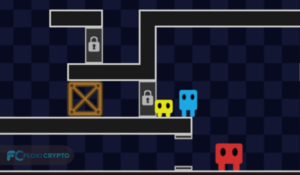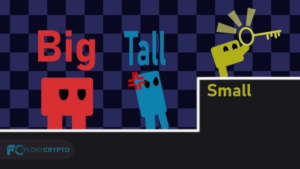The concept of “big tall small math playground” is gaining traction among educators and parents alike. The big tall small math playground approach introduces children to fundamental measurement concepts in a hands-on, engaging environment. Big tall small math playground activities encourage kids to compare, sort, and reason about objects, fostering strong cognitive and spatial reasoning skills. When children interact with various shapes and sizes through play, they not only have fun but also begin to build a strong mathematical foundation.
The big tall small math playground method emphasizes learning through doing. It’s not about worksheets or rote memorization—it’s about experiencing math in the real world. Whether in classrooms, daycares, or at home, this learning method helps kids internalize concepts like size, height, and proportion.
Why Size Matters in Early Math
Children are naturally curious about the world around them. Before they can count or add, they notice differences in size. The big tall small math playground method capitalizes on this innate curiosity. By providing children with tangible objects of varying sizes, they learn the basics of:
- Comparison (big vs. small)
- Measurement (how tall or short something is)
- Classification (grouping similar objects)
These skills set the stage for more advanced math, including geometry and algebra.
Bio Table
| Name | Role | Expertise |
|---|---|---|
| Jane Fields | Early Childhood Educator | Specializes in hands-on math education and play-based learning |
| Little Learners Academy | Preschool Program | Implements big tall small math playground methods in daily curriculum |
| Dr. Amy Ruiz | Child Psychologist | Studies the cognitive impact of sensory and size-based learning in kids |

How the Big Tall Small Math Playground Works

How the Big Tall Small Math Playground Works
The core idea is simple: provide kids with opportunities to explore different sizes using real-world objects in a play-based setting. In a big tall small math playground, children might encounter:
- Blocks of various heights
- Toys of different shapes and sizes
- Measuring tools like rulers and tape measures
- Group sorting bins
- Visual size charts
Through free exploration or guided instruction, kids start to understand relationships between sizes. This type of hands-on learning is more effective than abstract explanations alone.
Practical Applications of Big Tall Small Math Playground
Let’s look at some real-life scenarios where this concept is applied:
Classroom Activities
Teachers use the big tall small math playgrounds approach with:
- Block centers where kids sort by height
- Measuring walls to track student growth
- Shape and size scavenger hunts
- Interactive group tasks that involve comparing items
Home Learning
Parents can incorporate this approach into everyday routines:
- Comparing food sizes while cooking
- Sorting laundry by clothing size
- Stacking cans or books by height
- Creating obstacle courses with tall and small markers
Daycare Play Zones
Daycare centers often integrate this concept with:
- Size-themed storybooks and puppet shows
- Sandbox toys in varied dimensions
- Songs and chants involving big, tall, and small descriptions
Cognitive Benefits of Size-Based Play
The big tall small math playground method promotes several cognitive skills, such as:
- Visual discrimination: Identifying differences in size
- Spatial awareness: Understanding how objects relate in space
- Logical reasoning: Making decisions based on comparisons
- Vocabulary expansion: Learning descriptive size terms
These benefits extend beyond math, supporting language, science, and social-emotional development.
Building a Big Tall Small Math Playground
You don’t need expensive equipment to create a size-based learning environment. Use simple materials like:
- Cardboard boxes
- Measuring cups
- Stacking rings
- Foam blocks
- Household objects
Label areas with signs like “Big Zone,” “Tall Tower,” and “Small Space.” Encourage kids to group objects or build structures based on size. The more interactive, the better!
Tips for Educators and Parents
To make the most of your big tall small math playgrounds, follow these tips:
- Use everyday language: Reinforce size vocabulary in conversation.
- Ask open-ended questions: “Which one is taller? Why do you think so?”
- Celebrate mistakes: Let kids experiment and learn through trial and error.
- Rotate materials: Keep things fresh with new size-based tools or toys.
- Document progress: Track how children’s understanding evolves over time.
Integrating Big Tall Small Math with Other Subjects
This concept doesn’t exist in isolation. Blend it with:
- Art: Use size to explore scale and perspective in drawings.
- Music: Sing songs with big/small movements.
- Science: Compare natural objects like leaves, stones, or animals.
- Storytelling: Read books like Goldilocks and the Three Bears to discuss size.
Long-Term Impact of Size-Based Learning
Children who engage with size comparisons early on show improved outcomes in:
- Problem-solving
- Academic readiness
- Confidence with math
- Ability to follow instructions
The big tall small math playgrounds approach is more than just play—it’s preparation for future learning.

Conclusion
The big tall small math playground concept transforms math from a subject into an experience. By helping children interact with size differences in their environment, we nurture their curiosity and lay a strong foundation for academic growth. Whether you’re an educator, parent, or caregiver, incorporating big tall small math playgrounds ideas into daily routines can make a lasting impact on a child’s learning journey.
FAQs
What is a big tall small math playgrounds?
It’s a play-based learning method that helps children understand size concepts like big, tall, and small through interactive activities.
Why is size comparison important in early math?
It helps children build foundational skills in measurement, classification, and logical reasoning.
How can I set up a math playground at home?
Use household items like boxes, cups, and books to encourage sorting and stacking based on size.
Can this method be used in schools and daycares?
Yes, it’s widely used in classrooms and childcare centers to teach math through play.
What age group benefits most from this approach?
Preschoolers and early elementary students benefit the most from big tall small math playground activities.







